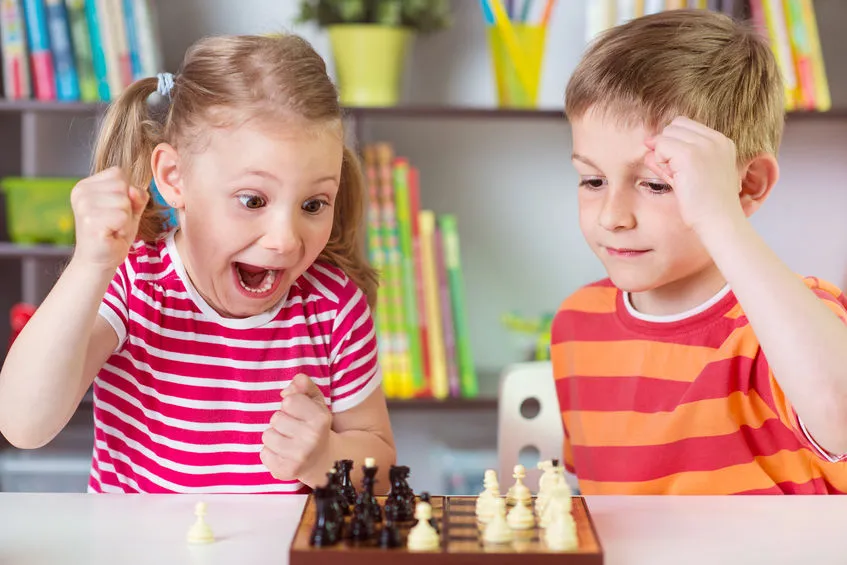
77.32% of parents see better grades in 3 months!
As a parent, have you ever wondered why your child excels in some subjects but struggles with others?
It could all come down to how they learn best.
Every child is unique, and the way they process information can vary.
This is where different educational learning approaches come in handy.
But what is a learning approach?
How can it help your child?
In plain language, a learning approach is the method or way someone learns.
Think of it like this: if learning were a road trip, the learning approach would be the route you choose.
Some kids need hands-on activities, while others thrive by reading or listening. Choosing the right route (or approach) can make learning more effective and even fun!
In this article, we’ll break down different methods of learning, why choosing the right approach matters, explain them in simple terms, and give you real-life examples that will help you relate to each approach.
Let’s dive in!
Why Choosing the Right Method is a Game-Changer

Imagine trying to teach your child to ride a bike by only showing them videos—chances are, they won’t get very far.
That’s why it’s so important to match the learning method with what works best for your child.
When you pick the right approach, learning becomes easier and less frustrating for everyone involved.
But what is a learning approach?
Simply put, it’s the method or strategy used to teach and learn.
There are many learning approaches that researchers have studied over the years.
Some focus on behavior, others on thinking, and some even focus on feelings and personal growth.
Let’s explore a few of these approaches to understand how they make a difference in a child’s learning journey!
Also Read: Teaching Innovation through Curriculum Alignment in Schools
Breakthrough Theories in How We Learn
Ever wonder why some kids learn best through hands-on activities, while others thrive by watching and listening?
It's all about the science behind learning!
These breakthrough theories explain how children absorb, process, and retain information, giving you insight into how to support your child’s unique learning style.
Let’s dive into the fascinating world of educational psychology and uncover the methods that truly make a difference.
The Behaviorist Approach
If you’ve ever used rewards (like stickers or extra screen time) to get your child to finish their homework, you’ve already dabbled in the Behaviorist Approach!
This method believes that learning happens by responding to things in the environment—think of it as action and reaction.
Repetition Wins: How Kids Learn by Doing
Kids often learn by repeating actions and getting feedback.
For example, when you’re teaching your child to say "thank you," you might praise them every time they do it.
This positive feedback makes them more likely to say it again in the future.
Pavlov’s Classical Conditioning
One of the earliest examples of this approach comes from Pavlov, a scientist who noticed that dogs would start to salivate whenever they heard a bell, expecting food.
So, what is a learning approach in this scenario?
It’s about forming associations between actions and outcomes.
How does this relate to your child?
Well, if every time your child finishes their homework, they get a reward, they’re more likely to form a habit of completing it.
Skinner’s Reinforcement Theory
B.F. Skinner, another famous psychologist, suggested that we learn behaviors through rewards and consequences.
So, if your child does their chores and gets rewarded with a fun outing, they’re more likely to keep doing their chores.
It’s all about reinforcement.
Applying It at Home
You might already be doing this without realizing!
Setting clear goals like "Read for 15 minutes every night" and offering rewards can motivate your child to develop good habits.
Just be consistent, and watch those new behaviors stick.
Social Learning Theory
Ever notice how your child copies what their friends or siblings do?
That’s Social Learning Theory in action!
This approach, developed by Albert Bandura, says that kids learn by watching others.
Learning by Watching Others
Think of this as the “monkey see, monkey do” approach.
So, what is a learning approach in this case?
It’s all about children learning by observing the people around them.
If they see their older sibling cleaning up after playtime, they’re more likely to follow suit (especially if they see them getting praised for it!).
Bandura’s Bobo Doll Experiment
Bandura’s famous experiment showed that children who watched adults behaving aggressively towards a toy were more likely to act aggressively themselves.
This is a great reminder that children are always watching—whether we realize it or not!
How You Can Implement This Theory at Home
Model the behaviors you want to see in your child.
If you want them to read more, set aside time to read together.
They’ll likely pick up on your habits and start mimicking them.
You could also encourage older siblings to be role models—if your eldest is packing their own lunch, the younger ones might follow.
Want your child to learn by example?
MentorMatch connects you with mentors who model positive behaviors and learning strategies. Explore how personalized mentorship can inspire your child!
Learning Through Thinking

Now let’s talk about how kids think and process information—the Cognitive Approach.
This method emphasizes that learning isn’t just about reacting to the environment; it’s about how we think, understand, and remember things.
Crack the Code: Thinking Your Way to Solutions
This approach works well for kids who enjoy figuring things out on their own.
It’s about encouraging them to think deeply and understand how things connect.
Have you ever asked your child,
“What do you think will happen if we mix these colors?”
That’s the cognitive approach at work—you’re encouraging them to think critically.
Bloom’s Taxonomy
A famous tool in this approach is Bloom’s Taxonomy, which helps break down learning into steps.
So, what is a learning approach in this context?
It’s about guiding students through different levels of understanding.
For example, a teacher might first ask students to remember facts, then understand them, and finally apply that knowledge to solve problems.
At home, you can do this by asking your child follow-up questions like, “Why do you think that happened?” after reading a book together.
Making It Fun at Home
Use everyday situations to encourage your child to think critically.
Whether you’re cooking, playing a game, or working on a puzzle, ask questions that make them think a little deeper.
For example, “What do you think will happen if we add too much flour to this cake mix?”
Empathy-Driven Education: The Humanistic Approach
Next up is the Humanistic Approach, which is all about focusing on the child’s personal experience and feelings.
This method emphasizes creating a supportive learning environment where children feel free to be themselves.
Emphasizing Personal Growth
Unlike some other approaches, this one cares more about the child’s emotional well-being than academic achievement alone.
It’s about helping your child grow as a whole person, not just a student.
Andragogy vs. Pedagogy
While this approach is often used for adults (and is called andragogy when it is), the core idea can still be applied to children.
So, what is a learning approach in this context?
It’s about creating a learning environment that feels safe and encourages curiosity, whether for kids or adults.
For instance, giving your child the freedom to explore a subject they’re passionate about, like space or animals, can make learning more meaningful for them.
Applying It in Everyday Life
Allow your child to make choices in their learning.
If they’re interested in a topic, encourage them to dive deeper.
Support their emotional growth by recognizing their feelings, whether they’re frustrated with math homework or proud of a completed art project.
Also Read: Simple Formative Assessment Strategies You Can Use in Your Classroom
Building Blocks of Learning: The Constructivist Approach
If your child loves to explore and figure things out on their own, the Constructivist Approach might be the perfect fit.
This approach believes that kids build (or “construct”) new knowledge by connecting it to things they already know.
Building on What They Already Know
Let’s say your child is learning about dinosaurs.
Instead of just reading a book, they might visit a museum or create their own clay models of dinosaurs.
This hands-on experience helps them make connections to what they’re learning.
Encouraging Creativity
This method works well in subjects like art, history, or science, where creativity is key.
At home, you can encourage this by asking your child to come up with their own explanations for things or to create something new based on what they’ve learned.
Encourage your child to build knowledge through discovery and creativity.
MentorMatch connects you with mentors who excel in hands-on, constructivist learning techniques. Discover the right guide for your child today!
Dive In and Learn: The Experiential Learning Path
Finally, we have the Experiential Learning Approach, which is all about learning through doing.
Have you ever taught your child how to ride a bike by actually getting on the bike? That’s experiential learning!
Kolb’s Learning Cycle
This method, developed by David Kolb, involves four stages:
- Experience – Doing something hands-on.
- Observation – Reflecting on what happened.
- Conceptualization – Understanding what you’ve learned.
- Practice – Applying the new knowledge.
Practical Application at Home
Think of activities like cooking, building a LEGO set, or doing a science experiment together.
Your child learns best when they can experience something first hand.
Afterward, talk about what they did and what they learned—this reinforces the lesson.
With these breakthrough theories in mind, try applying them at home and see how they can positively impact your child’s learning experience.
Conclusion
So, what is a learning approach and why does it matter?
It’s all about figuring out how your child learns best and finding ways to make learning fun and effective.
Whether it’s through hands-on activities, solving problems, or learning by watching others, understanding these different methods can really help your child shine.
Mix and match these approaches to find what clicks for them, and you’ll set them up for success.
Need a hand finding the perfect learning fit?
With MentorMatch explore how personalized guidance can make learning a breeze today!



.png)
.webp)
.webp)